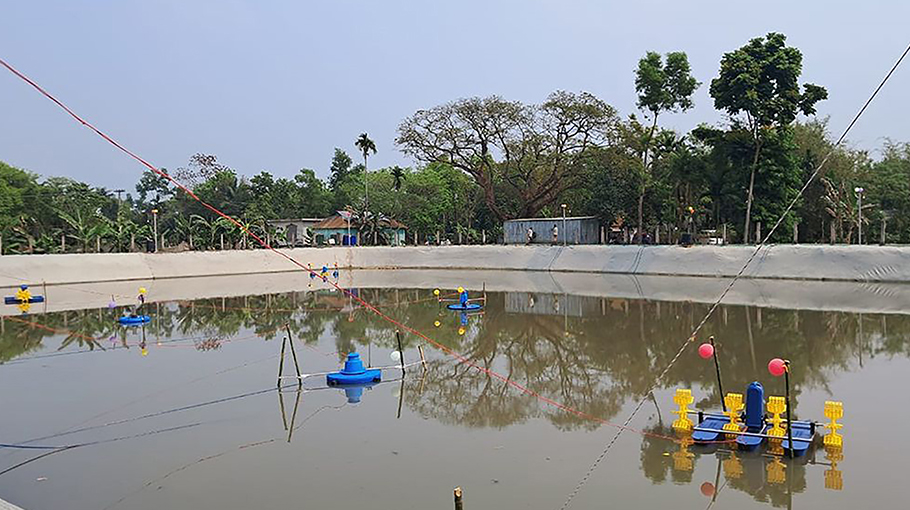Trishal upazila admin achieves success in fish farming using AI tech

Trishal upazila administration in Mymensingh achieved success in fish farming using Aquaculture 4.0 artificial intelligence (AI) technology and vertical expansion method.
Through this, they were able to cultivate more fish in a smaller area, which was the main purpose of using this modern AI technology.
A mobile app installed with the AI technology provides real-time information about the ponds, including the amount of oxygen in the pond, PH level, TDS and temperature. Based on the information, the app automatically turns on or turns off the aerator. When the amount of ammonia increases, the app automatically turns on the drainage pump and aerator to remove the accumulated waste at the pond’s bottom.
It was learnt that, few years ago, Trishal Upazila Nirbahi Officer Juwel Ahmed started researching and planning on how to produce more fish in small amount of area to preserve the agricultural land, as well as how to save the fish farmers from losses.
For that purpose, he started fish farming in a government pond, with an area of 58 decimals and 18 feet in depth, located in Kanihari union of the upazila. He used Aquaculture 4.0 technology, along with vertical fish expansion method and achieved huge success.
According to the statistics of Upazila Fisheries Department, various species of fish is being cultivated in 3,200 hectares of water bodies in Trishal. A total of 8,145 fish farmer produces 67,515 metric tonnes of fish each year. Although the fish from Trishal help to meet the demand of protein in the country, the amount of crop land is steadily decreasing and affecting the rice production. This led UNO Juwel Ahmed to think of an alternative method.
In the current year, 65,000 fish fries of pangas were released in the project pond on the second week of April. Each fish fry weighed 55 grams. After six months, each fish weighed 1,250 grams on average.
Regarding the result, Senior Upazila Fisheries Officer Shmasuzzaman said if each 65,000 fish fries of pangas were to grow to a mature fish weighing 1.5 kg to 2 kg on average using the conventional method, 4 acres of water bodies would have been required.
This AI technology gives real-time information on which species of fish need what kind food and in what amount and automatically provides the food to the fish through a feeder machine. There is no need for any human in these works. The farmers can get information about the possibility of rain and temperature fluctuation using rain sensor and weather forecasting tools.
The farmers can also get accurate information about the amount of electricity used in the farm, the amount food given to the fish and which aerator machine ran for how much time through this AI- based app. As the farmers usually don’t have these information, they face losses after selling the fish.
As UNO Juwel Ahmed was successful in the experimental fish farming, now he is working to start pilot project for other species of fish and distribute the technology to the farmer level.
In the experimental project, four automated feeders are placed around the pond to distribute fish feed. To enhance oxygen supply, eight aerators of eight types are installed both above and below the water. All of these devices are operated through AI technology, which activates them automatically according to the need.
Roni Saha, the technical consultant of this pilot project, explained that with the integrated use of advanced Aqua Culture 4.0 technology and the vertical expansion method in existing ponds, it is possible to cultivate 1,200 pangas fish in per decimal of a pond with 18 to 20 feet depth. This is five times higher than what can be cultivated through conventional method. Along with higher fish production on limited land, this approach also saves on feed, reduces manual labor, and yields results in a shorter time frame. Since water quality is consistently monitored and controlled, fish grown using this method are superior in taste.
UNO Juwel Ahmed said that a significant portion of the population in Trishal is involved in fish farming. To protect agricultural land and maximize production from existing ponds, he initiated this project, utilizing AI-based devices and vertical expansion methods to boost production and safeguard farmers from financial losses.




